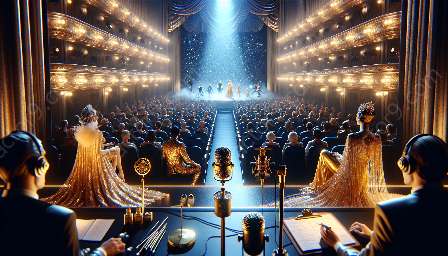Storytelling is an ancient and cherished form of communication that dates back to the dawn of humanity. It has the unique power to captivate, inspire, and transport audiences to different worlds through the magic of words. In the realm of performance art, particularly in the craft of voice acting, the use of vocal techniques is paramount to delivering an impactful and compelling narrative.
The Role of Voice Actors in Performance Art
Voice actors are skilled artists who specialize in using their voices to bring characters to life and convey stories across various mediums, including film, television, video games, animation, and audiobooks. They are responsible for creating a rich and immersive experience for the audience through the careful modulation of their vocal performances.
Vocal Pacing and Timing: The Essence of Impactful Storytelling
Vocal pacing and timing form the bedrock of impactful storytelling for voice actors. These techniques involve the deliberate use of rhythm, speed, and pauses to convey emotion, build tension, and engage the listener's imagination. By mastering vocal pacing and timing, voice actors can create a dynamic and evocative narrative that resonates deeply with the audience.
1. The Art of Rhythm
Rhythm is at the core of vocal pacing, influencing the flow and cadence of speech. Voice actors employ rhythmic patterns to emphasize key moments in the story, establish mood, and convey the natural ebb and flow of human conversation. By adjusting the pace and intensity of their delivery, voice actors can create a sense of drama, urgency, or tranquility, shaping the emotional landscape of the narrative.
2. The Power of Pauses
Pauses are a crucial tool in the arsenal of voice actors. Strategic pauses lend weight and significance to specific words, phrases, or moments of silence, allowing the audience to absorb the gravity of the narrative. In performance art, pauses serve as punctuation marks, guiding the audience through the emotional contours of the story and heightening the impact of pivotal moments.
3. Harnessing Vocal Dynamics
Vocal dynamics encompass the nuanced variations in volume, pitch, and intensity that voice actors use to imbue their performances with depth and authenticity. By modulating their voice to convey emotion, express character traits, and evoke imagery, voice actors can transport the audience into the heart of the narrative, forging a powerful connection between the story and its listeners.
Bringing Characters to Life Through Vocal Techniques
Voice actors employ vocal pacing and timing to breathe life into characters, infusing each portrayal with a distinct personality and presence. Through the skillful application of vocal techniques, voice actors can seamlessly transition between multiple characters, each with their own unique cadence, rhythm, and tonal quality. This versatility allows voice actors to craft a vivid and multi-dimensional universe within a narrative, enriching the storytelling experience for the audience.
The Impact of Vocal Pacing and Timing on Audience Engagement
When voice actors harness the art of vocal pacing and timing, they elevate the impact of their storytelling, eliciting a profound emotional response from their audience. The strategic use of vocal techniques creates a symphony of emotions and imagery that resonates with listeners, captivating their senses and immersing them in the world of the narrative. Through masterful vocal pacing and timing, voice actors have the power to transport audiences on an unforgettable journey through the realms of imagination and emotion.
The Ever-Evolving Craft of Voice Acting
As the landscape of entertainment continues to evolve, voice actors remain at the forefront of delivering compelling and immersive narratives. Through their dedication to mastering vocal techniques, including pacing and timing, voice actors continue to push the boundaries of performance art, enriching the cultural tapestry of storytelling across mediums and captivating audiences with their unparalleled vocal prowess.




























